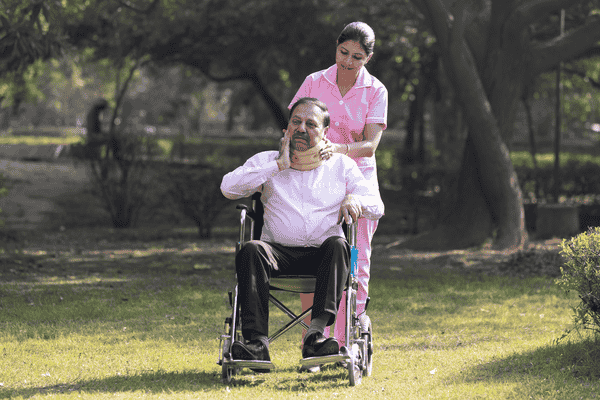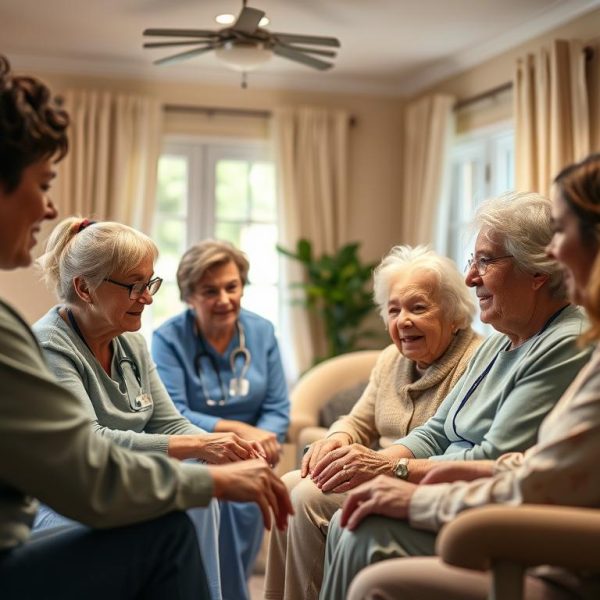The sun had barely risen when Sarah, a devoted caregiver, began her day. Her morning routine had always included a moment of reflection—a time to mentally prepare for the day ahead. Today, however, was different. Sarah knew she was facing a new challenge. She had recently been assigned to care for Mr. Thompson, an elderly man with complex health needs. While she had years of experience, Sarah couldn’t shake the feeling of uncertainty. How could she ensure that she was fully prepared to assess his condition and provide the best care possible?
In our lives as caregivers, there comes a time when we must confront our own fears and uncertainties. Whether you’re a seasoned professional or new to the field, mastering patient assessment is an essential skill that can make all the difference in the quality of care you provide. In this blog, we’ll follow Sarah’s journey as she learns the art of patient assessment, exploring the steps, techniques, and resources that can empower you to become a more confident and competent caregiver.
The First Step: Understanding the Importance of Patient Assessment
Sarah arrived at Mr. Thompson’s home with a mix of determination and apprehension. She had read through his medical history and knew he had a heart condition, diabetes, and mobility issues. But as she walked into his room, she realized that what she knew on paper was only part of the story. She needed to see the whole picture.
Patient assessment is the foundation of effective caregiving. It’s the process of gathering information about a patient’s physical, mental, and emotional well-being to make informed decisions about their care. For Sarah, understanding Mr. Thompson’s condition required more than just reading his chart. She needed to engage with him, observe his behavior, and listen to his concerns.
By mastering patient assessment, caregivers like Sarah can identify changes in a patient’s condition, monitor their progress, and ensure their safety and well-being. It’s not just about taking vital signs; it’s about seeing the whole person and understanding how different aspects of their health are interconnected.
Gathering Information: The Story Begins
As Sarah sat beside Mr. Thompson, she began by asking about his day. She noticed how his eyes brightened when he spoke about his grandchildren and how his voice softened when he mentioned his late wife. These were not just small talk—they were clues that gave her insight into his emotional state and well-being.
The first step in any patient assessment is gathering information. This includes understanding the patient’s medical history, current symptoms, medications, allergies, and any other relevant details. But beyond the facts and figures, it’s about connecting with the patient as a person. Sarah’s conversation with Mr. Thompson revealed not only his physical ailments but also his emotional needs.
Caregivers must take the time to communicate with the patient, their loved ones, and healthcare professionals to obtain a complete picture of the patient’s health. This initial phase sets the foundation for a thorough and accurate assessment.
Measuring Vital Signs: Listening to the Body’s Story
With the conversation easing some of her nerves, Sarah moved on to measure Mr. Thompson’s vital signs. She carefully wrapped the blood pressure cuff around his arm, ensuring it was positioned correctly. As she listened to the rhythmic sounds of his heartbeat, she couldn’t help but think of it as the music of his life—a melody that needed to be understood and cared for.
Vital signs are like the body’s way of communicating its current state. For caregivers, accurately measuring these signs is crucial for assessing a patient’s health. Sarah knew that blood pressure, heart rate, respiratory rate, and temperature were more than just numbers—they were indicators of Mr. Thompson’s overall well-being.
Each measurement provided Sarah with a piece of the puzzle. His slightly elevated blood pressure and slower-than-usual heart rate hinted at the need for further observation. By regularly monitoring vital signs, caregivers can detect changes that may signal a need for intervention.
Evaluating Different Systems: The Body’s Complex Narrative
As Sarah continued her assessment, she knew it was time to delve deeper. She needed to evaluate Mr. Thompson’s cardiovascular, respiratory, gastrointestinal, and neurological systems. Each system had its own story to tell—a story that could reveal potential issues or changes in his health.
Evaluating different systems in the body is a critical part of patient assessment. Caregivers must be familiar with common signs and symptoms associated with various conditions and diseases. For Sarah, this meant paying close attention to how Mr. Thompson’s heart sounded, how his lungs expanded with each breath, and how his reflexes responded to gentle taps.
By carefully assessing each system, Sarah could identify any potential issues or changes in Mr. Thompson’s health. She noticed a slight wheeze in his breathing and made a mental note to keep an eye on it. These observations were crucial for developing a comprehensive care plan.
Assessing Mental Health and Emotional Well-being: The Hidden Chapters
As the assessment continued, Sarah sensed that there was more to Mr. Thompson’s story. She noticed the way his hands trembled slightly when he spoke about his late wife and how his smile faded when he mentioned the loneliness he felt in the evenings. This wasn’t just about physical health—it was about his mental and emotional well-being.
Assessing mental health and emotional well-being is an often-overlooked aspect of patient assessment, yet it’s just as important as evaluating physical health. For Sarah, this meant being attuned to the subtle signs of anxiety, depression, or confusion in Mr. Thompson.
Caregivers must be vigilant in observing changes in a patient’s mood, behavior, and cognitive function. Sarah’s compassionate approach allowed Mr. Thompson to open up about his feelings, giving her valuable insights into his mental state. She knew that addressing his emotional needs was a critical part of his overall care.
Cultural Sensitivity in Patient Assessment: Respecting the Unwritten Stories
As Sarah reflected on her day, she realized how much Mr. Thompson’s cultural background influenced his approach to health and well-being. He often referred to traditional remedies his mother used and spoke of the importance of maintaining dignity in his old age. These were not just preferences—they were integral parts of his identity.
Cultural sensitivity is a crucial aspect of patient assessment. Caregivers must recognize and respect the diverse cultural backgrounds of their patients, understanding how these can impact health beliefs, practices, and communication styles.
For Sarah, this meant being open to learning about Mr. Thompson’s cultural heritage and incorporating his values into his care plan. By doing so, she could provide care that was not only effective but also respectful and personalized.
Communication Skills in Patient Assessment: The Language of Care
Throughout the assessment, Sarah relied on her communication skills to connect with Mr. Thompson. She asked open-ended questions, listened actively, and responded with empathy. She knew that effective communication was the bridge between understanding his needs and providing the care he deserved.
Effective communication is at the heart of patient assessment. It involves more than just asking questions—it’s about listening, understanding, and responding with compassion. Sarah’s ability to communicate effectively with Mr. Thompson helped her gather the information she needed to make informed decisions about his care.
Caregivers must develop strong communication skills to build trust, understand patient needs, and provide optimal care. This includes using clear and simple language, being aware of non-verbal cues, and involving the patient in the decision-making process.
Documenting Patient Assessments: Writing the Final Chapter
As the day came to an end, Sarah knew there was one final task to complete—documenting her findings. She carefully recorded Mr. Thompson’s vital signs, observations, and the conversations they had shared. She knew that accurate documentation was not just a formality; it was a vital part of ensuring continuity of care.
Accurate and thorough documentation of patient assessments is crucial for caregivers. It ensures that important information is recorded and can be easily accessed by healthcare professionals, family members, and other caregivers. For Sarah, this meant following a systematic approach to documentation, including all relevant details and maintaining confidentiality.
Proper documentation plays a pivotal role in communication between caregivers and healthcare providers, ensuring that everyone involved in the patient’s care has access to the information they need.
Continuous Learning: The Never-Ending Story
As Sarah closed Mr. Thompson’s file, she felt a sense of accomplishment. But she also knew that her journey as a caregiver was far from over. There was always more to learn, more to understand, and more to give. She resolved to continue expanding her knowledge and skills, knowing that this commitment would make her a better caregiver.
Caregiving is a journey of continuous learning and growth. Whether you’re just starting out or have years of experience, there is always room to improve your patient assessment skills. By seeking out additional resources, training, and support, caregivers can stay up-to-date with the latest best practices and enhance their ability to provide high-quality care.
Conclusion: The Heart of Caregiving
Sarah left Mr. Thompson’s home that day with a renewed sense of purpose. She had faced her fears, learned new skills, and most importantly, connected with her patient in a meaningful way. She knew that patient assessment was not just a task to be completed—it was the heart of caregiving.
As caregivers, we are entrusted with the well-being of those we serve. Mastering patient assessment is not just about gathering information—it’s about understanding the whole person and providing care that is compassionate, respectful, and effective. Like Sarah, we can all become more confident and competent caregivers by embracing the art of patient assessment and continuing our journey of learning and growth.








